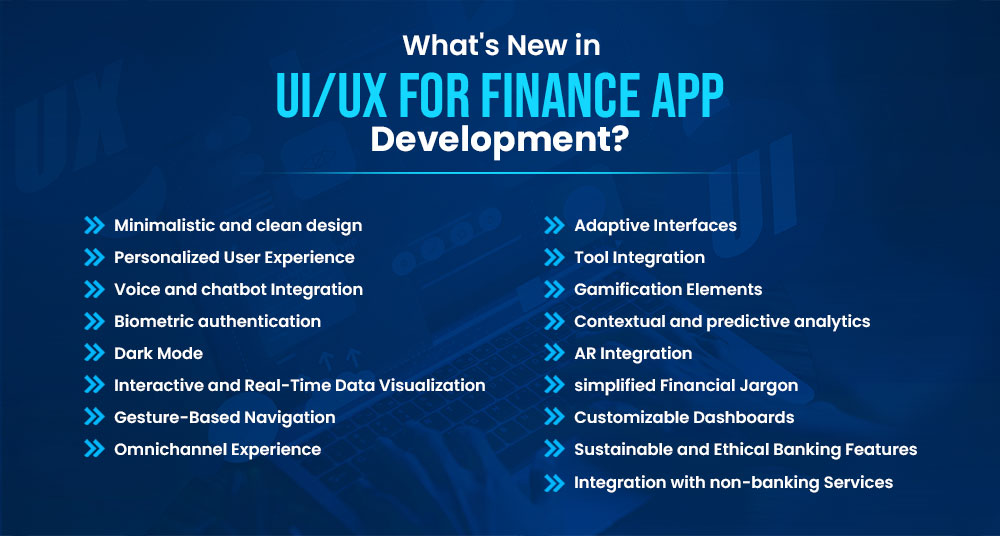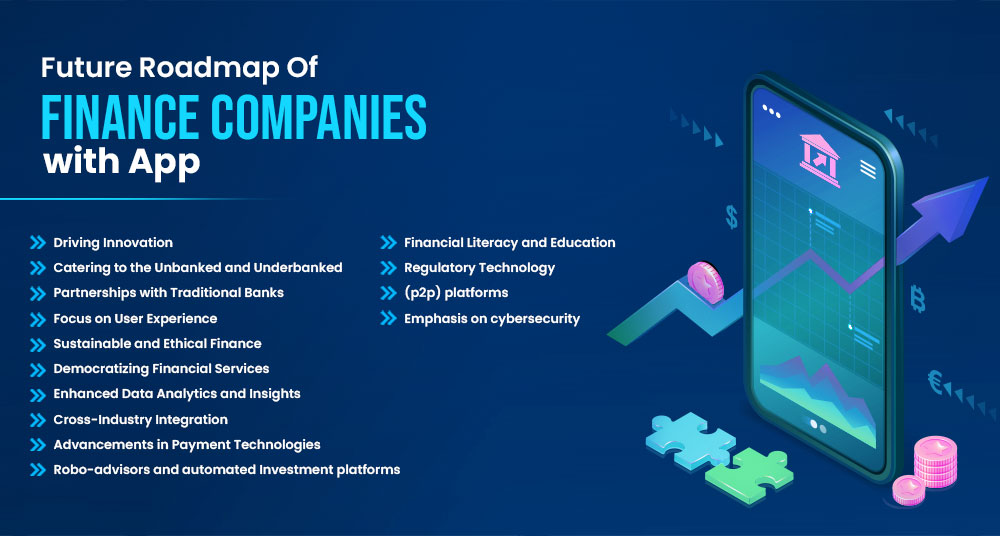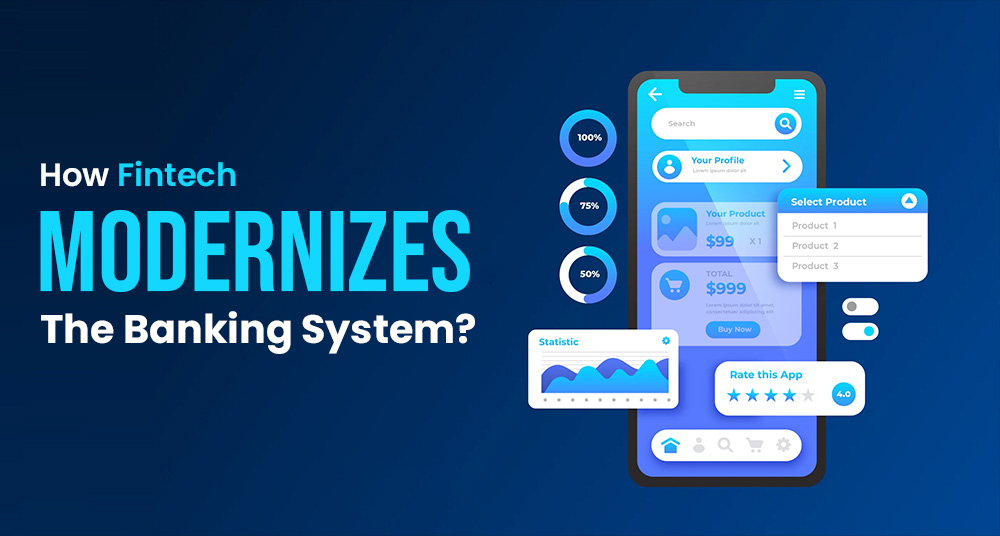The landscape of financial services has been undergoing a significant transformation driven by rapid technological advancements. In this era, banking and finance app development has become a cornerstone for the fintech industry. This blog delves into the latest trends in banking app development, highlighting how fintech app development companies are reshaping how we interact with financial services.
The Rise of Fintech and Its Impact on Banking App Development
The financial industry has witnessed a significant transformation with the emergence of fintech (financial technology) companies. These entities leverage technology to enhance or automate financial services and processes. The rise of fintech is rooted in the 2008 global financial crisis, which created distrust in traditional banks and opened doors for innovative, tech-driven solutions.
Fintech app development companies range from startups offering specific solutions like mobile payments, peer-to-peer lending, and personal finance management to tech giants venturing into financial services. These companies have democratized financial services, making them more accessible to a broader audience. They have introduced user-friendly platforms, reduced fees, and offered faster, more efficient services than traditional banks.
How Fintech is changing Traditional Banking?
Fintech’s impact on traditional banking is profound and multifaceted. Firstly, competition has intensified, compelling conventional banks to innovate and adapt. Banks are now investing in digital transformation, developing their fintech solutions, or partnering with companies to retain their customer base and stay relevant in the market.
One of the most significant changes is the mobile and online banking shift. Fintech apps offer a convenience and user experience that traditional banking channels often need to match. Once considered premium features like real-time notifications, financial analytics, and personalized financial advice are now standard offerings in most fintech apps.
Moreover, fintech has led to the democratization of financial services. Technologies like blockchain and AI have enabled fintech companies to offer services like microloans, peer-to-peer lending, and affordable international money transfers, previously inaccessible to many customers, especially in underbanked regions.
Fintech is also pushing banks to rethink their customer relationship strategies. Data analytics and AI allow a more personalized banking experience, understanding customer needs and offering tailored products and services. This level of personalization was not feasible with traditional banking models.
Latest Trends in UX/UI for Finance Apps

Minimalistic and clean design
Modern banking apps embrace minimalistic designs that focus on core functionalities, reducing clutter and enhancing user focus. This trend includes using whitespace, clean typography, and a limited color palette to create a calming and straightforward user experience.
Personalized User Experience
Personalization is becoming a key UX/UI design trend. Banking apps increasingly use AI and machine learning to analyze user behavior and preferences, offering personalized financial advice, alerts, and product recommendations.
Voice and chatbot Integration
With the rise of AI, voice assistants and chatbots are being integrated into banking apps. This allows users to perform transactions or get support through natural language processing, making the experience more interactive and convenient.
Biometric authentication
For enhanced security, banking apps incorporate biometric authentication methods like fingerprint scanning, facial recognition, and voice recognition. This adds an extra layer of protection and simplifies the login process.
Dark Mode
Many banking apps now offer a dark mode feature, which reduces glare and makes the app more accessible to the eyes in low-light conditions. This feature is about aesthetics, user comfort, and battery efficiency.
Interactive and Real-Time Data Visualization
To help users understand their financial health better, modern banking apps are incorporating interactive charts and graphs that provide real-time financial data visualization.
Gesture-Based Navigation
With the increasing use of smartphones, gesture-based navigation is becoming popular in banking apps. Swipes, taps, and other gestures make navigation more intuitive and efficient.
Omnichannel Experience
Ensuring a seamless experience across various devices and platforms is crucial. Users expect a consistent and unified experience, whether using a banking app on their smartphone, tablet, or desktop.
Adaptive Interfaces
Banking apps increasingly use adaptive UIs that adjust not only to different screen sizes and device types but also to the user’s environment and preferences. This includes changing layouts, text sizes, and contrast based on the user’s device settings and usage patterns, enhancing accessibility for all users, including those with disabilities.
Integrated Financial Management Tools
Modern banking apps are integrating comprehensive financial management tools within their interface. This includes budgeting tools, expense trackers, and investment monitoring, providing users with a holistic view of their financial health directly within the app.
Gamification Elements
Some apps incorporate gamification elements to make financial management more engaging. This can include rewards, badges, and visual progress indicators that encourage users to achieve their financial goals in a fun and interactive way.
Contextual and predictive analytics
advanced analytics are being used to provide contextual information and predictive insights. For instance, if a user looks at mortgage options, the app might display relevant articles and tips or calculate potential monthly payments based on their financial history.
Augmented Reality (AR) Integration
Some pioneering apps are experimenting with AR to offer an immersive experience, such as using AR to visualize future savings or find nearby ATMs and bank branches.
Simplified Financial Jargon
Recognizing that not all users are financial experts, banking apps focus on simplifying the language used. This involves explaining financial terms in layperson’s terms and providing educational content to help users make informed decisions.
Customizable Dashboards
allowing users to customize their app dashboard according to their preferences and most-used features. This could include setting up quick access to frequently used transactions, viewing preferred accounts at a glance, or customizing alerts and notifications.
Sustainable and Ethical Banking Features
With growing awareness of social and environmental issues, some apps highlight the ethical and sustainable aspects of banking, such as carbon footprint tracking for purchases or options to invest in green funds.
Integration with non-banking Services
Some banking apps expand their functionality by integrating with non-banking services like insurance, retail offers, or travel booking, providing a more comprehensive ecosystem within a single app.
How are Fintech Companies Shaping the Future?

Fintech companies’ role in shaping the financial sector’s future is multifaceted and profound. These companies are innovating within the confines of traditional economic models and redefining what finance means in the digital age. Here’s a closer look at how they are driving this transformation:
Driving Innovation
Fintech companies are the vanguards of innovation in financial services. Their agility and openness to adopting cutting-edge technologies allow them to implement innovative features and services much faster than traditional banks. This includes everything from blockchain-based transactions to AI-driven financial advice. Their innovative approaches are setting new benchmarks in the industry, compelling conventional financial institutions to accelerate their pace of digital adoption.
Catering to the Unbanked and Underbanked
FinTech’s play a pivotal role in financial inclusion, reaching out to unbanked and underbanked populations, especially in emerging markets. By leveraging mobile technology, they provide access to financial services for those historically excluded from the traditional banking system. This includes offering micro-loans, affordable payment services, and simplified savings and investment platforms, thus fostering economic empowerment at the grassroots level.
Partnerships with Traditional Banks
The collaboration between fintech companies and traditional banks is a significant trend. FinTech’s bring innovation and technological prowess, while banks offer a robust customer base, regulatory expertise, and deep industry knowledge. These mutually beneficial partnerships are expected to become more prevalent, leading to a more integrated financial services landscape.
Focus on User Experience
Fintechs have revolutionized the user experience in financial services. Their user-centric designs, intuitive interfaces, and personalized services have set new standards in customer experience. This has prompted traditional banks to rethink their digital strategies and focus more on enhancing the user experience to retain and attract customers.
Sustainable and Ethical Finance
With a growing global emphasis on sustainability and ethics, fintechs increasingly focus on green finance and ethical investment options. They are aligning their services with the values of a segment of consumers who prioritize environmental and social governance (ESG) criteria. This shift is attracting socially conscious investors and driving a broader movement towards responsible financing.
Democratizing Financial Services
Fintech companies are democratizing access to financial services by offering more affordable and accessible solutions. They are breaking down barriers that once made certain financial products and services exclusive to large institutions or affluent individuals. Technology enables a broader range of people to access services like investment management, complex financial analytics, and global transactions.
Enhanced Data Analytics and Insights
Fintech companies leverage big data analytics to gain deeper insights into customer behavior, preferences, and needs. This allows for more accurate risk assessment, personalized financial advice, and predictive modeling to anticipate market trends. Enhanced data analytics also enable fintechs to offer more tailored products and services, improving customer engagement and satisfaction.
Cross-Industry Integration
Fintech companies increasingly integrate financial services with other industries, such as e-commerce, healthcare, and real estate. This integration allows for seamless transactions and innovative service offerings, like in-app purchases, on-demand insurance, or real estate crowdfunding platforms. Such cross-industry collaborations expand the scope and reach of financial services, making them more embedded in everyday activities.
Advancements in Payment Technologies
FinTech’s are revolutionizing payment technologies by introducing faster, more secure, and more convenient payment methods. This includes contactless payments, instant cross-border transactions, and digital currencies. These advancements are not only making transactions easier but are also paving the way for a cashless society.
Robo-advisors and automated Investment platforms
Fintech companies are making investment advice and management more accessible through robo-advisors and computerized platforms. These tools use algorithms to provide investment advice and manage portfolios, making wealth management services available to a broader audience at a lower cost than traditional financial advisors.
Financial Literacy and Education
Many fintech companies educate users about financial products and management. Through interactive tools, educational content, and user-friendly platforms, they demystify finance and empower users to make informed financial decisions.
Regulatory Technology (RegTech)
Fintechs also lead the way in RegTech, using technology to streamline compliance and regulatory processes. This includes automating compliance tasks, fraud detection, and anti-money laundering activities. By simplifying and enhancing regulatory processes, fintechs are helping financial institutions reduce compliance costs and risks.
Expansion of peer-to-peer (p2p) platforms
Fintech companies are expanding the scope of p2p platforms beyond lending to include insurance, real estate, and even energy trading. These platforms allow individuals to transact directly with each other, bypassing traditional intermediaries, which can lead to more competitive rates and innovative service models.
Emphasis on cybersecurity
As financial services increasingly move online, fintech companies strongly emphasize cybersecurity. By employing advanced security measures such as encryption, multi-factor authentication, and blockchain technology, they are working to protect sensitive financial data and build trust with their users.
The Future of Banking App Development
Artificial intelligence (AI) and Machine Learning (ML) will become more integral to banking apps. They will drive personalized banking experiences, offer predictive analytics for customer behavior, and enhance security through intelligent threat detection. Blockchain technology will revolutionize banking app development by providing decentralized, transparent, and secure transactions.
This could lead to the rise of new financial products and services like peer-to-peer lending platforms and more efficient cross-border payments. Digital-only banks, or neobanks, will likely gain more popularity, offering a full range of banking services with lower fees and higher convenience. These institutions will challenge traditional banks, forcing them to innovate more rapidly.
Banking apps will increasingly include features aimed at improving financial wellness. This includes budgeting, saving, investing, and even financial education tools, helping users make more informed financial decisions. Banking apps will extend their reach to wearable technology, allowing users to conduct transactions and check their financial status directly from smartwatches and other wearable devices.
Fintech App Development cost
Every organization has different requirement and objectives that affect the cost of fintech application development so there is not any fix cost for fintech app development. It depends on many factors features, type, functioning and total development time. Fintech app development can cost between $35000 to $70000 depends on its complexity level.
Conclusion
The financial services industry is about to enter a new era, which means that the development of banking apps is going through a significant change. The convergence of technology, customer expectations, and regulatory changes is crafting a new narrative in finance. With their agile approaches and innovative solutions, Fintech companies are complementing and challenging traditional banking institutions, pushing them towards a more rapid digital transformation.
A combination of cutting-edge technologies like AI, ML, blockchain, and quantum computing will define financial services’ effectiveness, security, and personalization in the future of banking app development. The integration of these technologies promises a more inclusive financial ecosystem where services are more accessible, user-friendly, and tailored to individual needs.
Moreover, focusing on user experience, ethical banking, and financial wellness reflects a shift toward customer-centric models. This evolution concerns technological advancement and aligning financial services with the values and expectations of a modern, informed, and ethically conscious clientele.
As we look ahead, the collaboration between traditional banks and fintech companies will likely grow more robust, creating a synergy combining both worlds’ strengths. This partnership is crucial for navigating the complexities of the financial landscape, ensuring compliance, and meeting the diverse needs of customers globally.
In conclusion, the future of banking app developmet is bright and promising. It holds the potential to revolutionize how financial services are delivered and experienced and impact global financial inclusion and economic empowerment significantly. As we embrace these changes, the key will be to balance innovation, security, and customer-centricity, ensuring that the financial industry continues to evolve in a way that benefits all stakeholders.






What do you think?
It is nice to know your opinion. Leave a comment.